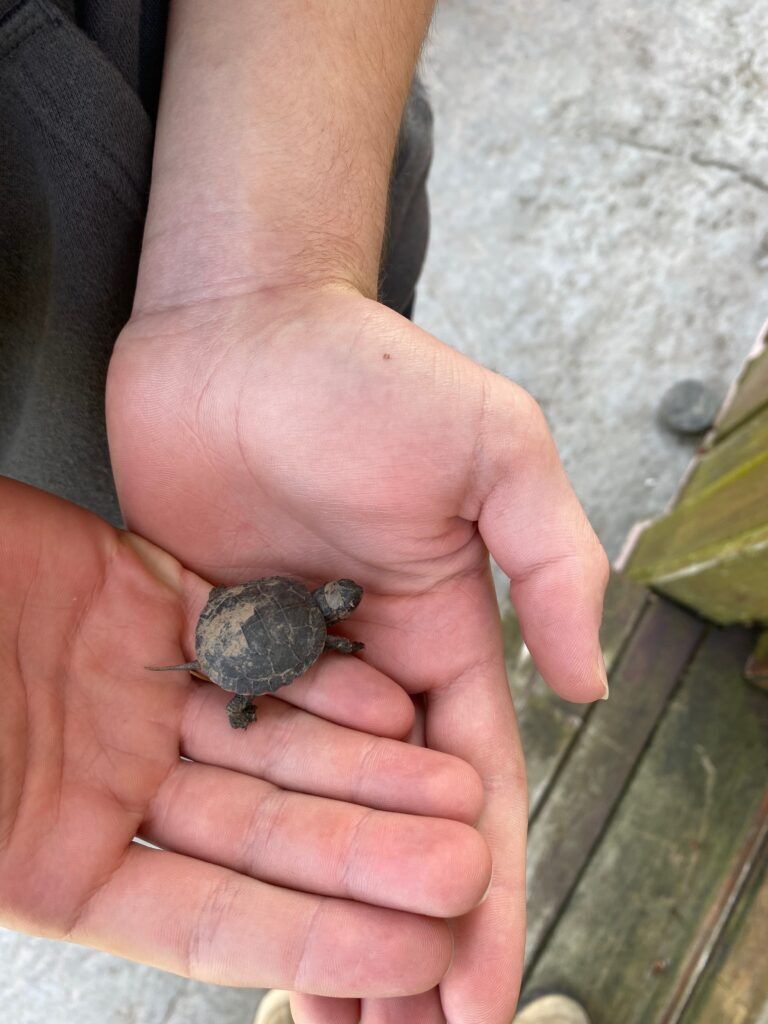
TURTLES
May and June are busy months for most turtles. Many clutches of eggs laid during the previous Spring, especially those of the painted turtle, hatch during the month of May. Then, within just a few short weeks, in June, mature females leave the marsh to secure suitable nesting habitat in which to lay their eggs and begin the life cycle anew.
Turtles are slow to mature, only reaching egg-laying status anywhere from 6 to 20 years of age, depending upon the species. Of the 8 species of turtles in Ontario, most reside within the Big Creek watershed. All are covered under the Endangered Species Act, with some designated as “at-risk”, some designated “of concern”, and 2 species considered “endangered”. The painted turtle, which is most common in this area, was the last of the 8 species to be placed on the list, as a “species of concern”, in May, 2018. In 2017, Ontario placed a hunting ban on snapping turtles (which only reach sexual maturity anywhere between 17 and 20 years of age – later than humans!).
Most turtles lay their eggs in sandy, gravelly soil that is not too moist nor too dry. Because they often travel considerable distances to find suitable nesting conditions, they are frequently hit by cars as they crossroads. They face other perils as their eggs are dug up by raccoons, skunks, foxes, etc. and development destroys more and more suitable nesting areas when sandy soils are covered by cement, asphalt, or heavy crushed stone. Despite these perils, hatchlings do emerge, often the following May, (although they can surface throughout the first summer). Baby turtles, smaller than a quarter (if painted offspring), then have to immediately find their way back to the marsh. Many are casualties on the roadways.
As a pedestrian, when you are out for a walk, you can move any live babies that you see to the marsh side of the road. If you encounter an adult, they should be moved to the side of the road in the same direction they are travelling. As a home owner, you can maintain some open lawn/ground on your property and ensure that access to the marsh is easily gained (keeping in mind that this access is for something smaller than a quarter climbing over obstacles). Even with this help and having survived against almost overwhelming odds, baby turtles still face predation by marsh birds and bigger snakes once they reach the water. However, if they are the lucky one in a hundred (or hundreds) to attain adulthood, their only predators are human, and they can live for many decades, enriching our lives and the ecosystem.
ERCA has done a comprehensive Big Creek Watershed Plan Natural Heritage Study which includes our Lake Erie Country Club marsh and its inhabitants. You can download your own copy of ERCA LECC Marsh Evaluation
Gloria Mitchell
Lake Erie Country Club Environmental Awareness Representative
June 2020
